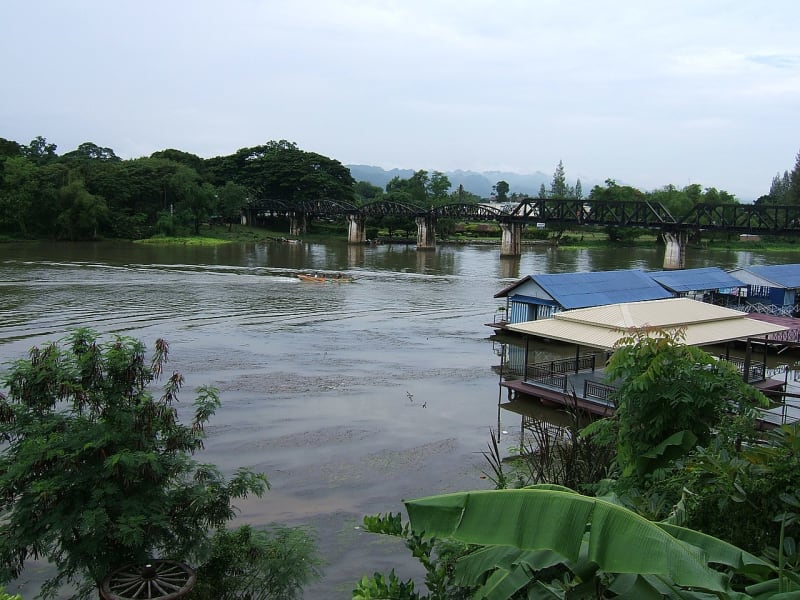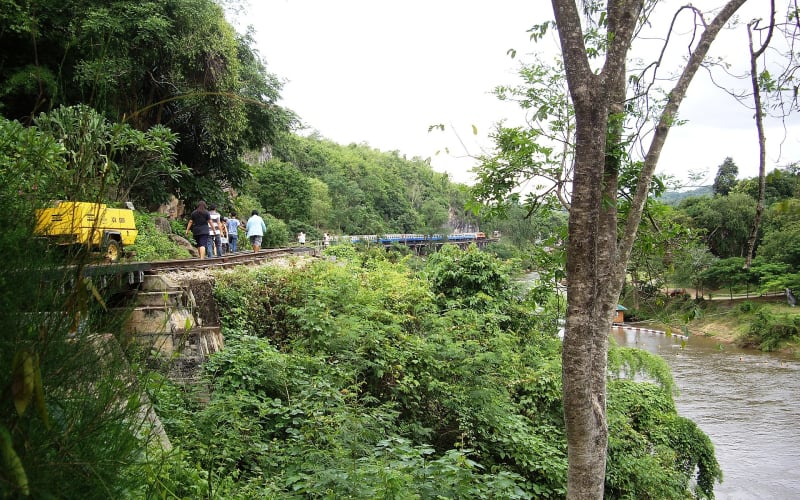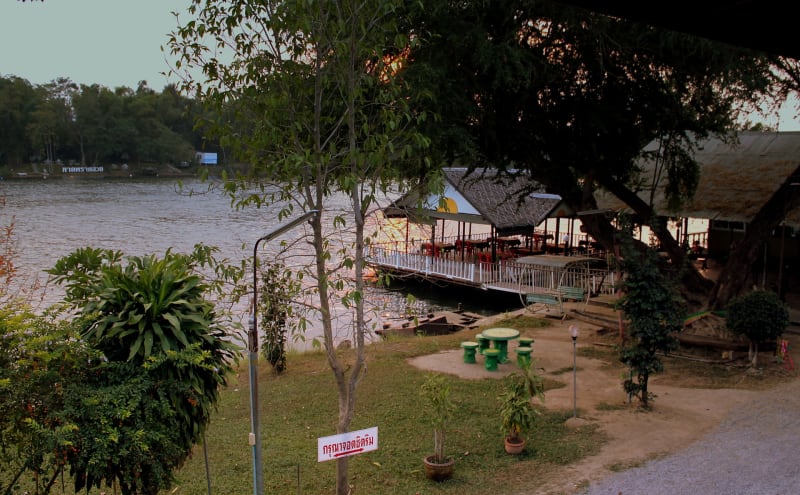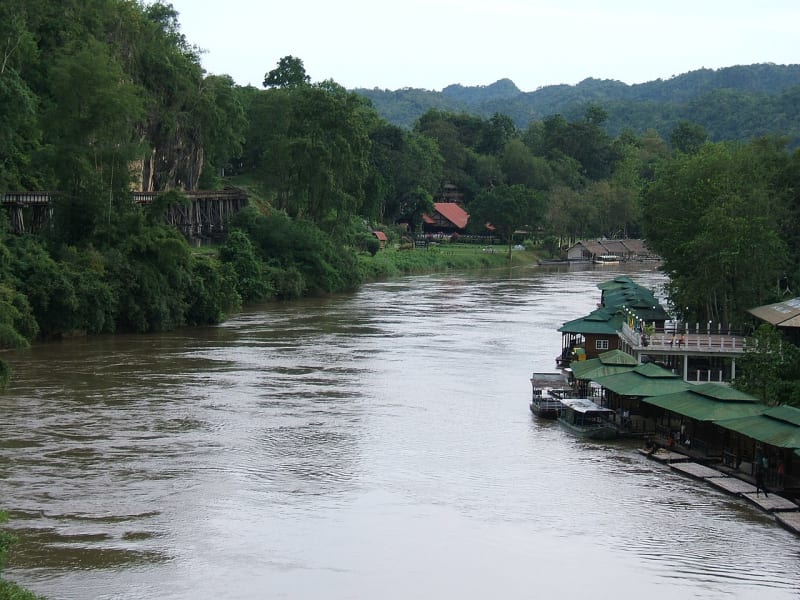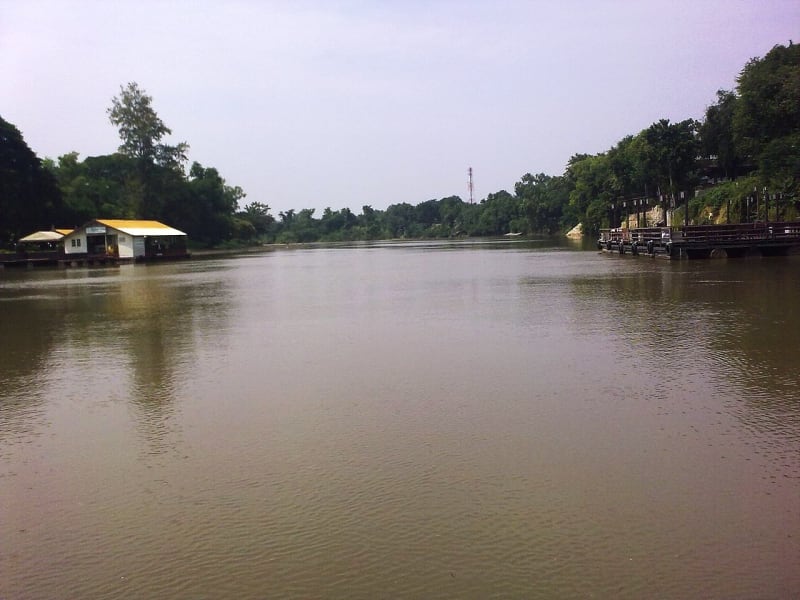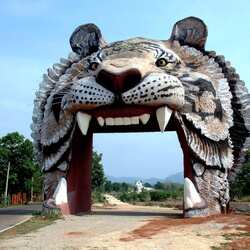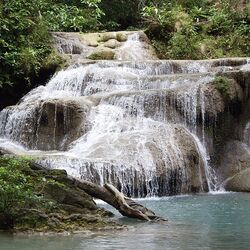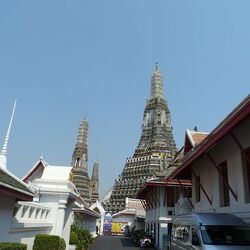River Kwai
The Kwai River flows through the famous Kanchanaburi region, it owes its existence to two tributary rivers, the Kwai Noi and the Kwai Yai. This is one of the most popular areas in Thailand. On the Kwai River west of Bangkok, thousands of prisoners of war worked on the railway during World War II, Thailand's invasion of Myanmar. Daily fluctuations in the water level in the river reach one and a half meters.
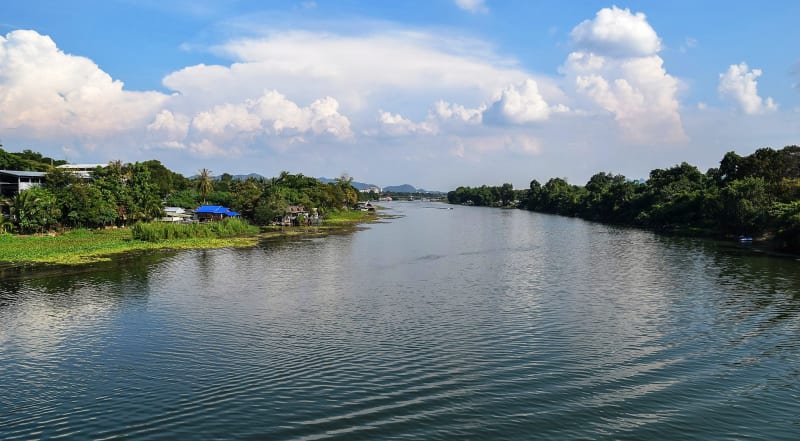
Short description
The famous bridge over the River Kwai is the reason why many people come here. This is one of the most famous points in Thailand, which has already been filmed based on the book of the same name. The film was adapted by David Lean in 1957, and today it is included in the list of the 100 best films of all time. A group of British prisoners of war is depicted in a Japanese camp, who are to build a wooden railway bridge. However, in real life, the prisoners of war were forced to build two bridges. First, they built a wooden bridge; five months later, there was also a steel bridge that crossed the Hwae Yai River in Kanchanaburi. Both structures were destroyed by the Allies, but the steel bridge was rebuilt by a Japanese company in 1946 and is still in use today.
Hellfire Pass
The Hellfire Pass is also called the Konyu Cut, its length is 600 meters, carved into the rocks. The passage was cut by several workers in extreme conditions of heat and hard physical work. The prisoners worked from 16 to 18 hours a day, seven days a week. The glow of the flaming torches creates an ominous sight, from which the name Hellfire Pass originated.
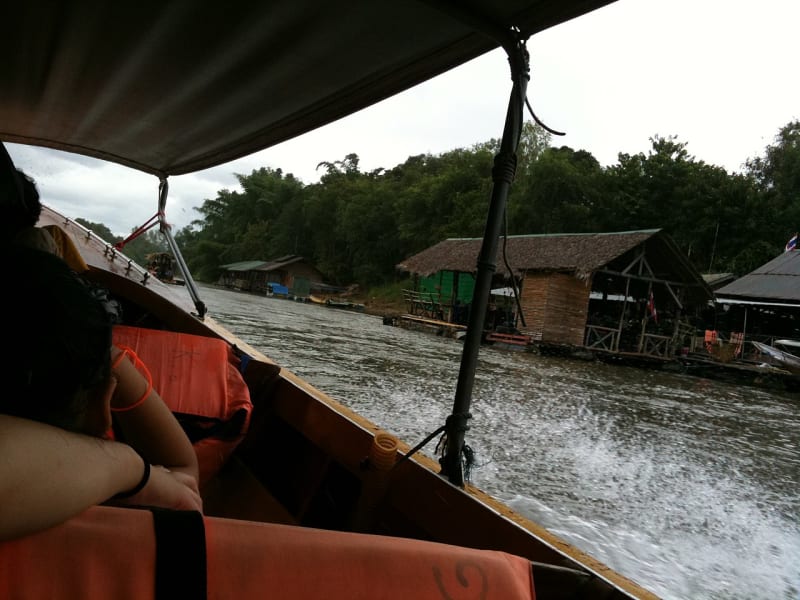
Military Cemetery
This is the place where the prisoners of war who built the Kwai Bridge are buried in terrible conditions. It contains many touching personal stories, photos and videos about this dark piece of Thai history. It is not only a museum, but also a war grave, also known as the Don Rak Military Cemetery, where about 7,000 British, Dutch and Australian prisoners of war died during the construction of the Death Railway.
Erawan Waterfalls
Erawan National Park in Thailand is located near the bridge over the River Kwai and is best known for its spectacular waterfalls. The waterfalls descending here gradually open up a unique corner of nature. It was named Erawan because of the waterfall, which resembles Erawan, the three-headed elephant from Hindu mythology.
Tham Tan Lod National Park
The park, known to most locals as Tham Tan Lod, is a wild, magnificent place a few hours north of Kanchanaburi. Elephants and tigers still roam the mountains, and it's not uncommon for villagers living in the park to be visited by these adorable animals. After passing through Tham Tan Lod Noi, you can see hundreds of wooden steps that will take you high into the mountains.
The sunken temple of Wat Sam Prasop
There are a number of attractions near the River Kwai, the most popular of which is the famous sunken temple of Wat Sam Prasop. In the 1980s, the Vajiralongkorn hydroelectric dam was built, which flooded the region and formed the Khao Laem Reservoir. Many villages were destroyed in the lowlands, and some temples were completely or partially flooded. Today, when the lake level is low, you can see the peaks of some of these temples protruding from the surface, and this is an intriguing place to visit.
Mon Bridge for Sunrise
The most iconic landmark on the River Kwai is the 400-meter Mon, the longest handmade wooden bridge in the whole country. A walk across this bridge is mandatory at any time of the day, but it is especially magical in the morning at sunrise, when the monks descend to collect alms from the locals. This is a very ancient tradition, in some places, for example, in Luang Prabang, it has become a tourist attraction, in Sangkhla Buri it has retained its authenticity.
